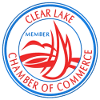NORTHERN CALIFORNIA – Caltrans reported that the U.S. Highway 101 southbound lane only near Piercy will experience a short detour onto Route 271 as crews complete guardrail work.
Community
WASHINGTON, DC – Congressman Mike Thompson (CA-05) released the following statement about the services he provided to constituents and the legislation he sponsored in 2017.
California was the No. 50 Growth State for 2017, according to U-Haul data analyzing the past year’s U.S. migration trends.
Year-over-year arrivals of one-way U-Haul truck rentals increased by 4 percent while departures increased by 5 percent from California’s 2016 numbers.
Year-over-year arrivals of one-way U-Haul truck rentals increased by 4 percent while departures increased by 5 percent from California’s 2016 numbers.
LAKE COUNTY, Calif. – Pacific Gas and Electric Co. announced that it is introducing a new electric time-of-use rate plan to promote more efficient energy usage and provide customers with additional rate plan options.
LAKE COUNTY, Calif. – Candidate for the California’s lieutenant governor’s race, progressive Gayle McLaughlin will be a special guest on Lake County Community Radio’s “Citizen Lake.”
CLEARLAKE, Calif. – The Clearlake Police Department is alerting the community to an identity theft and financial scam that’s been reported by community members.
LCNews
Award winning journalism on the shores of Clear Lake.
 |
 |
 |
 |
 |

 How to resolve AdBlock issue?
How to resolve AdBlock issue? 